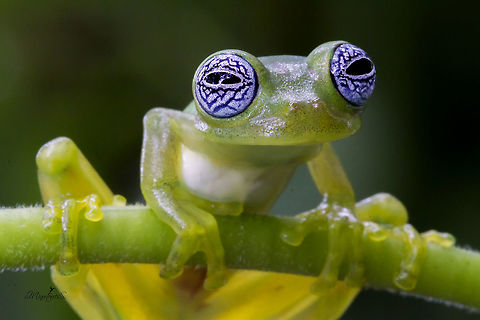
Appearance
Adult males measure 27–29 mm (1.1–1.1 in) and females 28–34 mm (1.1–1.3 in) in snout–vent length. The snout is truncate in lateral view. Both fingers and toes have webbing. The dorsal skin is shagreen. The dorsum is uniform dark green in color. The gular region and belly are creamy white. The iris is white or light gray with black reticulations.The males call from the upper surfaces of the leaves near streams and may engage in fights. The eggs are black and are deposited on the upper surface of the leaves.

Habitat
Its natural habitats are humid lowland and montane primary and secondary forests at elevations between 180 and 1,420 m (590 and 4,660 ft) above sea level. It is typically found in bushes and trees along forest streams, its breeding habitat. While habitat loss is a localized threat, it is not considered threatened as a species by the International Union for Conservation of Nature (IUCN).References:
Some text fragments are auto parsed from Wikipedia.